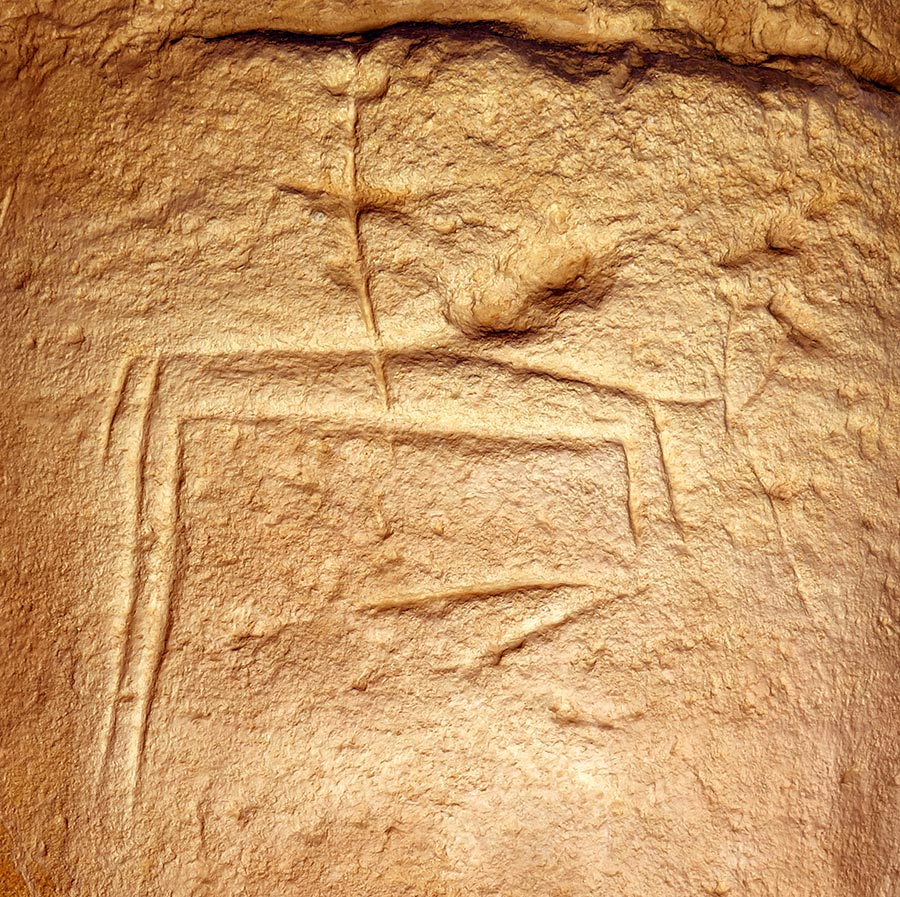Temple Graffiti: Human Figures
Graffito T10. Human – Rider on Quadruped

This stylized quadruped is shown leaping, a human rider on its back. The human figure has a circular depression or gouge for the head, and a vertical line indicating the neck and torso. The bent, right arm extends behind the figure. The left arm has been lost due to erosion in the rock, and only the faintest trace of the legs is visible. The animal’s oval head is outlined, and the body is indicated by two horizontal lines, each of which extends to form the front and back legs. A short vertical line indicates the tail. Although this graffito could be intended to represent a horse, the animal’s long body and short tail might also indicate a donkey. Donkeys or asses were domesticated 6,000 years ago and were important in ancient Kush and Egypt (royal donkeys were even buried with one of the early kings of Egypt at Abydos), and they continue to be valuable commodities in Sudanese farming communities like El-Kurru.
- Kurru ID number: 020
- Location: Column A15-3:2, south face
- Dimensions (H × W): 26 × 27 cm

